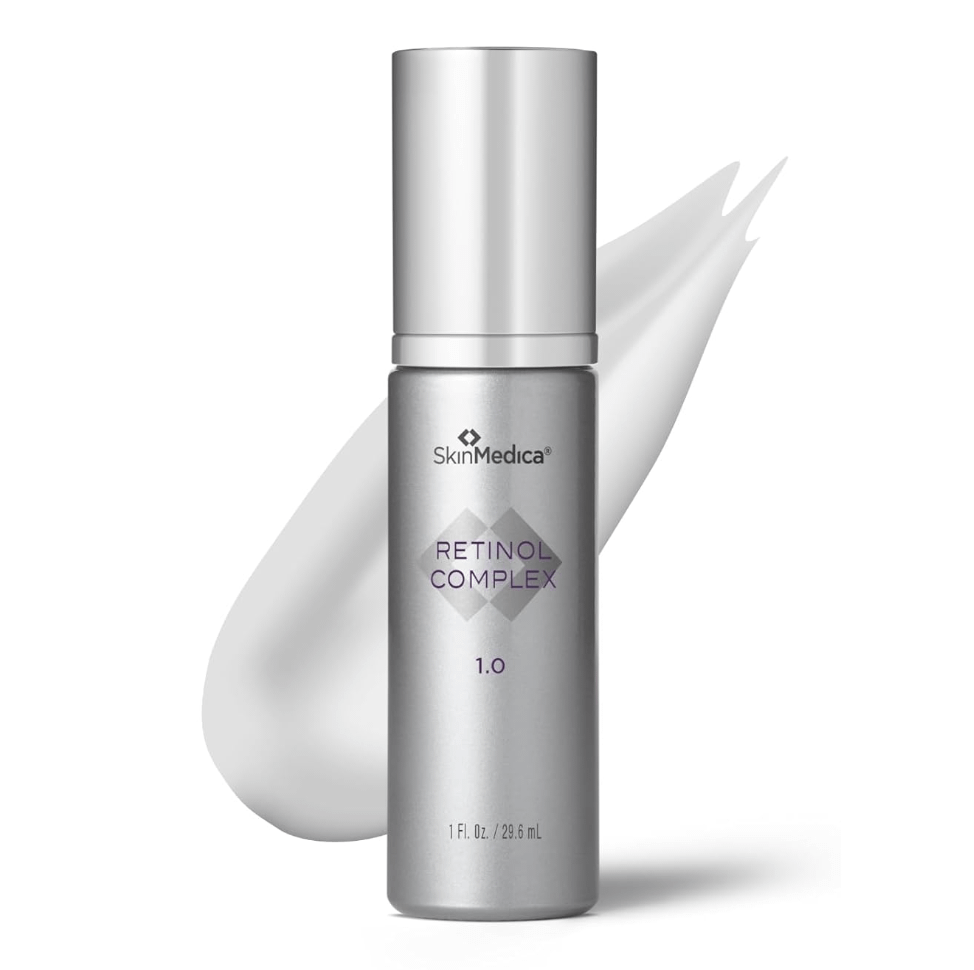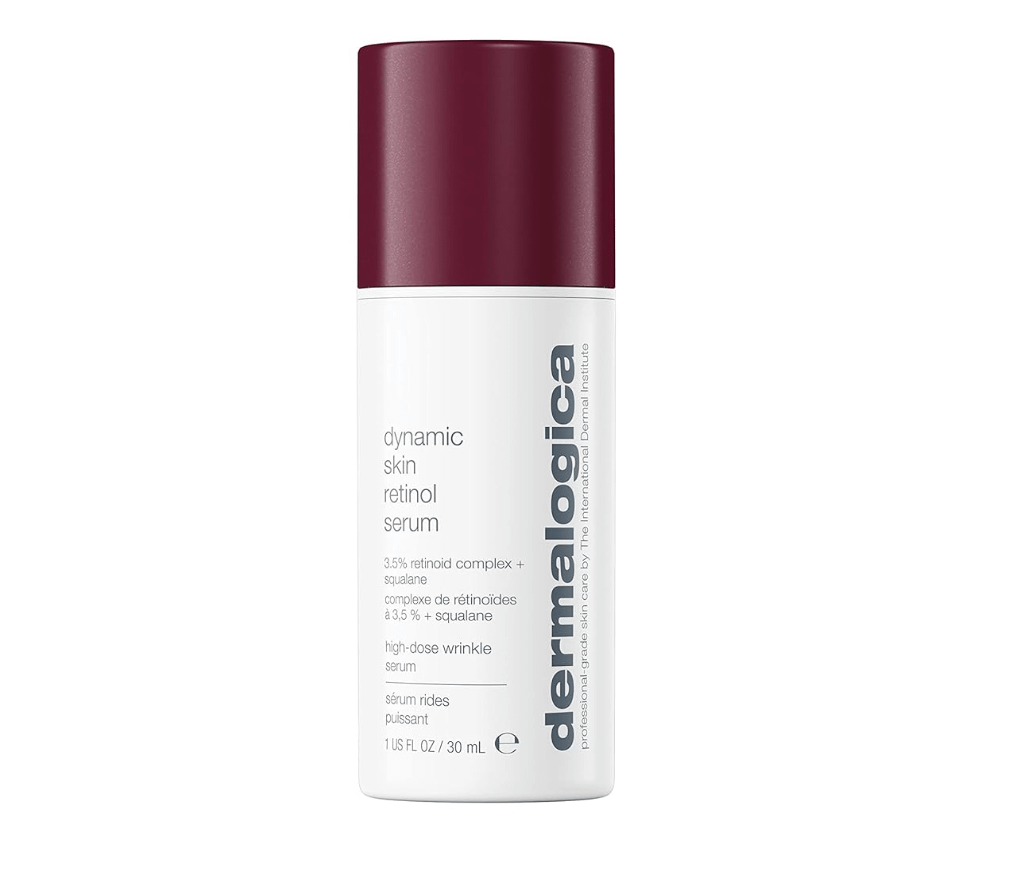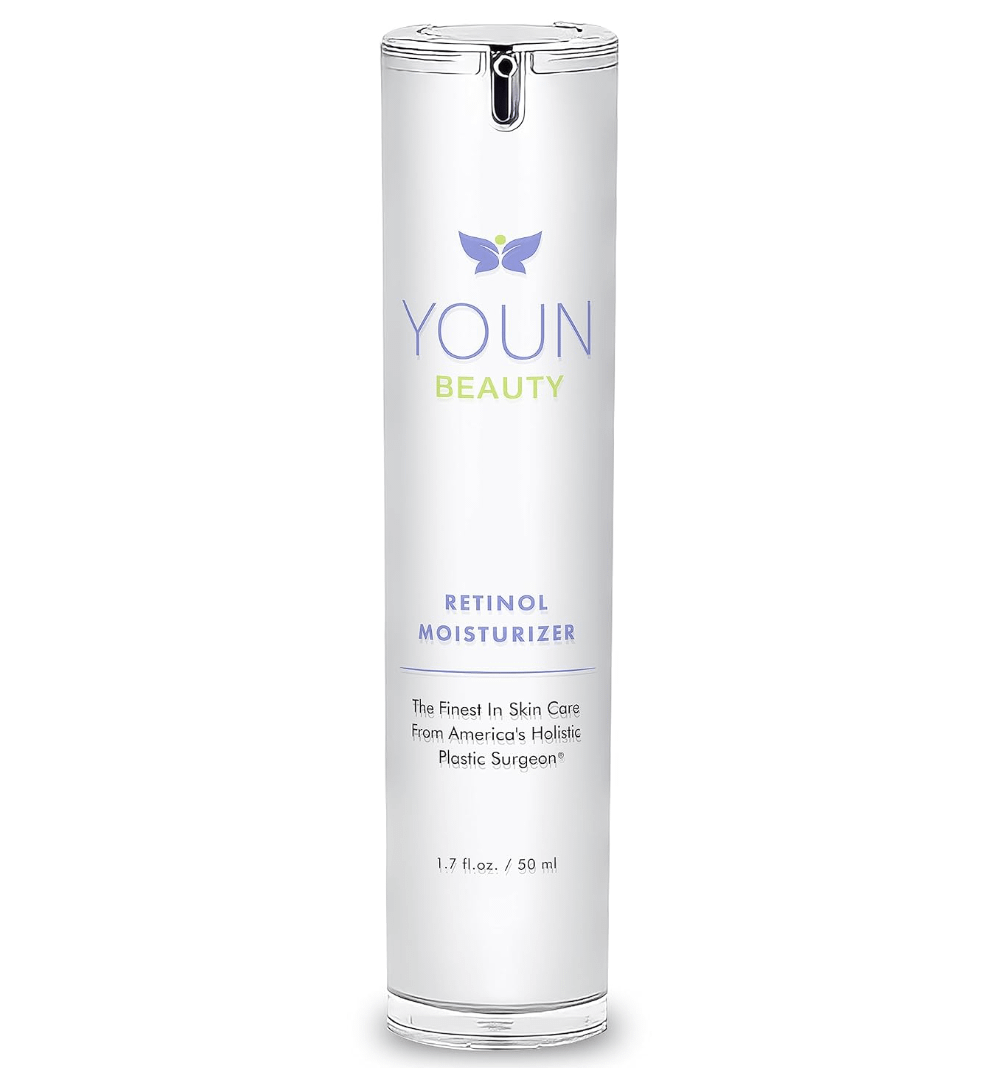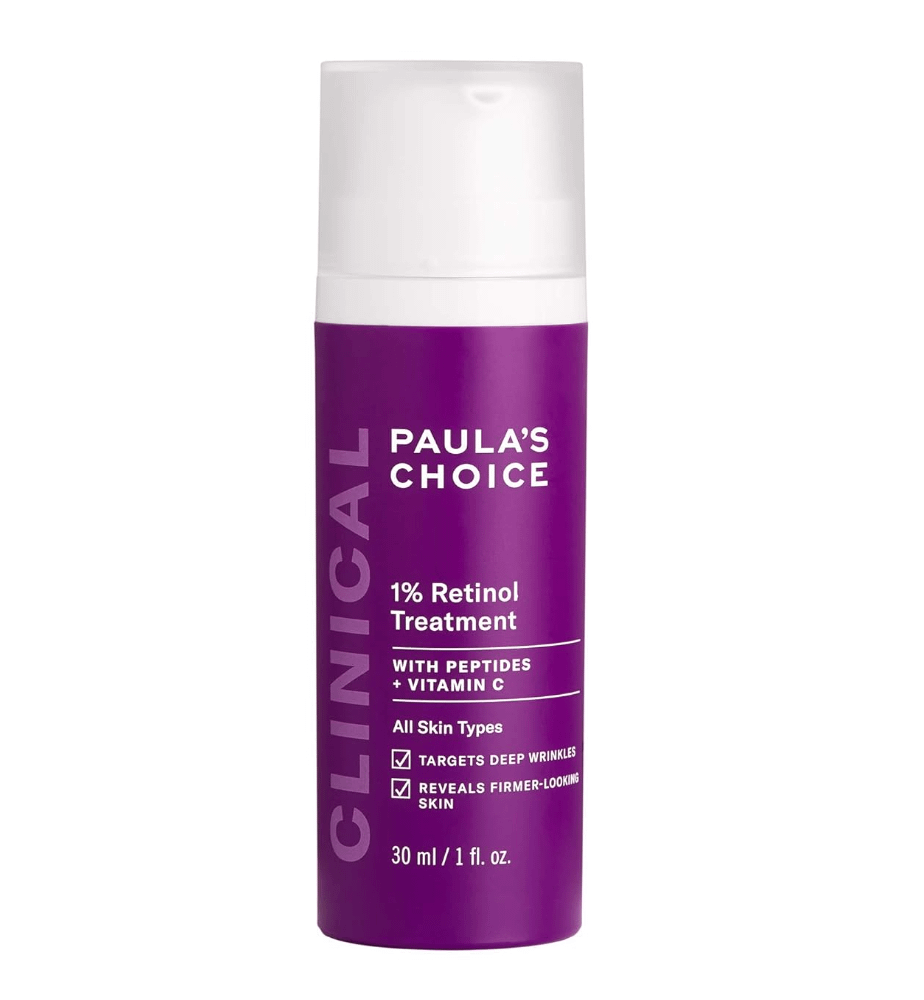DEFINITION OF SEBACEOUS HYDROPLASIA
Sebaceous hyperplasia treatments are massively diverse, and if you want to know the best type for your condition, you have to first know what it is.
Sebaceous hyperplasia is a common benign skin condition characterized by enlarged sebaceous glands that typically appear as small, yellowish, or flesh-colored bumps on the face.
Although a dermatologist can easily diagnose it, it is frequently mistaken for acne or other skin conditions.
It may sound like a mouthful, but it’s a common skin ailment many people suffer from.
It’s a fancy way of explaining that your sebaceous glands, which create oil to lubricate your skin, have grown and become enormous.
What are the results of sebaceous hyperplasia?
This can result in little, raised bumps on your skin that resemble pimples or whiteheads.
While sebaceous hyperplasia isn’t usually a significant medical condition, it can be aggravating and even unpleasant for those who suffer from it.
The good news is that several therapies are available to help manage the problem and improve your skin’s appearance.
There are numerous alternatives to consider, ranging from topical lotions and gels to more intrusive procedures such as laser therapy.
So, if you have sebaceous hyperplasia and are self-conscious about your skin, don’t panic; you’re not alone, and there are treatments available.
With a little perseverance and the assistance of a trained dermatologist or skincare professional, you may restore your skin’s appearance and feel.
I will assist you during this article to guide you through the causes, diagnosis, available treatments, side effects of treatments, and everything else you need to know.
Causes of sebaceous hyperplasia
You may wonder what causes sebaceous hyperplasia, a skin disorder that can leave you with elevated, rough patches. There are a few things that can contribute to its growth.
A. Hormonal changes
Hormonal alterations are one possible reason for sebum hyperplasia.
Women, in particular, may experience flare-ups during periods of hormonal imbalance, such as pregnancy or menopause.
This is because hormones can cause the sebaceous glands to swell and become larger.
As a result, you may see little, yellowish pimples on your skin that are difficult to remove.]
B. Sun exposure
Sun exposure is another cause of sebaceous hyperplasia.
UV radiation from the sun can cause skin damage, including inflammation and swelling of the sebaceous glands.
This might lead to the formation of tiny pimples on the skin over time.
As a result, it is critical to protect your skin from the sun by using sunscreen and taking other precautions.
C. Genetics
Genetic factors can also be the cause of sebaceous hyperplasia.
You are more likely to get the ailment if you have a family history of it.
Even if you are genetically susceptible to the illness, there are strategies to control it and reduce its impact on your skin.
D. Other Reasons
Hold on, there’s more! Stress, a bad diet, and certain drugs are all potential causes of sebaceous hyperplasia.
Stress can disrupt the body’s hormonal equilibrium, affecting the sebaceous glands.
A poor diet deficient in key nutrients can also affect skin health, making it more susceptible to disorders such as sebaceous hyperplasia.
Certain drugs, such as corticosteroids, can also contribute to the condition’s development.
While the reasons for sebaceous hyperplasia are various and complex, numerous strategies exist to address the disease and enhance the health and appearance of your skin.
You may regain control of your skin’s health and confidence in your skin by working with a skincare specialist and adopting certain lifestyle modifications.
Diagnosis of sebaceous hyperplasia
Sebaceous hyperplasia is a troublesome skin disease, but there are numerous ways for healthcare providers to detect it.
If you have raised, bumpy areas on your skin, your doctor may use one of the following methods to diagnose sebaceous hyperplasia:
A. Skin biopsy
The first method is a skin biopsy, where a small sample of the affected skin is taken and examined under a microscope.
A biopsy can confirm the diagnosis of sebaceous hyperplasia and rule out other illnesses with similar symptoms, such as basal cell carcinoma or squamous cell carcinoma.
Before performing a skin biopsy, your healthcare provider will numb the area with a local anesthetic.
They will then extract a sample of the affected tissue with a small tool, which will be sent to a lab for analysis.
The biopsy results will help your healthcare provider determine the best course of treatment for your sebaceous hyperplasia.
B. Evaluating symptoms
Sebaceous hyperplasia is a common skin ailment in which the oil-producing glands in your skin swell.
There are a few crucial symptoms to look out for if you suspect you have sebaceous hyperplasia.
- The emergence of tiny, yellow, or flesh-colored pimples on your skin is the first sign of sebaceous hyperplasia. These bumps are usually round or oval, with a central depression.
They are most typically found on the face, particularly the forehead, nose, and cheeks, but they can appear on other regions of the body as well.
2. Increased oil glands on your skin are another sign of sebaceous hyperplasia. These glands may develop on your skin as elevated, glossy lumps that are painful or itchy.
They may also become inflamed or infected in some situations, resulting in redness, swelling, and pain.
A dermatologist would often check your skin and review your symptoms to diagnose sebaceous hyperplasia.
- A skin biopsy may also be performed to confirm the diagnosis. A small sample of your skin will be extracted and analyzed under a microscope for evidence of sebaceous hyperplasia during a skin biopsy.
Aside from a physical examination and skin biopsy, your dermatologist may inquire about your medical history as well as any medications or skin care products you are currently using.
Steroids and immunosuppressants, for example, can raise your chance of developing sebaceous hyperplasia.
Here’s an overview of the available sebaceous hyperplasia treatment options:
Your dermatologist can provide an accurate diagnosis and establish an effective treatment plan to help improve the appearance and health of your skin by reviewing your symptoms and doing a complete examination.
Sebaceous Hyperplasia Treatment Options
A. Medications
Sebaceous hyperplasia is a benign skin condition that usually does not require treatment; however, if it is causing discomfort or aesthetic problems, there are a few drugs that may help manage the symptoms.
1. Oral medications for sebaceous hyperplasia treatment
Oral drugs and topical treatments are the two primary types of pharmaceuticals used to treat sebaceous hyperplasia.
Oral drugs: Oral medications are often administered to patients with severe sebaceous hyperplasia or numerous lesions.
Isotretinoin, a potent medicine that reduces the size of the sebaceous glands and helps reduce oil production, is a regularly recommended prescription.
However, isotretinoin has been linked to several side effects, including dry skin, joint pain, and increased sun sensitivity, so it should be used with caution.
2. Topical medications for sebaceous hyperplasia treatment
Topical medicines are typically used for mild to moderate cases of sebaceous hyperplasia.
One of the most widely used topical treatments for this illness is retinoids.
They work by shrinking the sebaceous glands and reducing the amount of oil they generate.
Topical retinoids can cause skin dryness, redness, and peeling, but these adverse effects normally fade with time.
3. Other Medications
Salicylic acid is another often-prescribed topical drug that exfoliates the skin and unclogs pores, lowering the size of the sebaceous glands.
Benzoyl peroxide may also be useful in treating sebum hyperplasia by lowering irritation and inhibiting bacterial development.
It’s worth noting that some over-the-counter medications may be beneficial in treating the symptoms of sebaceous hyperplasia.
Products containing alpha-hydroxy acids (AHAs) or beta-hydroxy acids (BHAs), for example, can help exfoliate the skin and lower the number of sebaceous glands.
However, before using any over-the-counter treatments, please consult with a dermatologist because they may not be appropriate for all skin types or may cause adverse reactions.
Caution!
In conclusion, both oral and topical drugs can be beneficial in the treatment of sebaceous hyperplasia, but they should only be taken under the supervision of a dermatologist.
A dermatologist can offer the most appropriate medicine and treatment plan to help control the symptoms of sebaceous hyperplasia based on the severity of the problem and the individual’s skin type.
B. Surgical Procedures for Sebaceous Hyperplasia Treatment
Fortunately, there are several surgical procedures available to treat sebaceous hyperplasia and improve skin appearance.
We’ll look at four typical surgical procedures for sebaceous hyperplasia and talk about how they can help you manage it.
1. Laser surgery for sebaceous hyperplasia treatment
Laser surgery is a popular treatment option for sebaceous hyperplasia since it is less invasive and leaves few scars.
A dermatologist will use a laser to target and eliminate the sebaceous glands that are creating pimples on the skin during the procedure.
The sebaceous glands absorb the laser’s intense light pulses, which eventually cause them to shrivel and disappear.
Laser surgery is often conducted under local anesthesia, and most patients experience only minor discomfort.
2. Cryotherapy
Another effective surgical treatment for treating sebaceous hyperplasia is cryotherapy.
During this procedure, liquid nitrogen is applied to the affected area, freezing and killing the sebaceous glands.
The bumps will eventually fade as the skin heals.
Cryotherapy is usually done in the dermatologist’s office and does not require any downtime.
While cryotherapy is generally safe, some patients may experience mild discomfort or redness following the procedure.
3. Electrocautery
Electrocautery is a technique that employs heat to eliminate the sebaceous glands that cause skin pimples.
A dermatologist will use a small probe to send an electrical current to the sebaceous glands during the operation, causing them to shrink and finally disappear.
Electrocautery is commonly conducted under local anesthesia, and most patients experience only minor discomfort.
While electrocautery is generally safe, there is a risk of scarring or skin discoloration, so talk to your dermatologist about the risks and benefits of this procedure.
4. Surgical excision
Surgical excision is a more intrusive method that involves removing the sebaceous glands that cause skin lumps.
Typically, this procedure is reserved for larger or more stubborn sebaceous hyperplasia lesions that have not responded to other treatments.
A dermatologist will numb the region with a local anesthetic and make a small incision to remove the problematic tissue during the treatment.
While surgical excision is generally safe, there is a risk of scarring or infection, so it is critical to carefully follow your dermatologist’s aftercare instructions.
Note!
If you have sebaceous hyperplasia and want to improve the appearance of your skin, surgical methods such as laser surgery, cryotherapy, electrocautery, and surgical excision can help.
However, it is critical to consult with a board-certified dermatologist about your treatment options to determine the best course of action for your specific situation.
You may attain smoother, clearer skin and feel more confident in your appearance by collaborating with your dermatologist.
Side Effects of Sebaceous Hyperplasia Treatment
While there are several treatments for sebaceous hyperplasia, each has potential side effects that patients should be aware of before undergoing any procedure.
In this article, we’ll look at the adverse effects of several therapies for sebaceous hyperplasia, such as oral and topical drugs, as well as surgical methods.
1. Side Effects of Oral Medicines
To treat sebaceous hyperplasia, oral drugs such as isotretinoin may be administered.
These medications, however, may have some potentially serious side effects. For example, isotretinoin can cause dry skin, lips, and eyes, as well as muscular and joint pain.
It can also increase the risk of depression and suicidal ideation, so talk to your doctor about these risks before starting any oral medication.
2. Side Effects of Topical Medicines
Such as retinoids can also be used to treat sebaceous hyperplasia.
While these medications are generally well tolerated, they can have some side effects, such as skin redness, dryness, and peeling.
Topical medicines can potentially cause allergic reactions or skin irritation in some situations.
3. Side Effects of Laser Surgery
It is a minimally invasive operation that involves the use of a laser to eliminate sebaceous glands.
While this procedure is generally safe, some side effects may occur, including redness, swelling, and temporary skin discoloration.
Laser surgery can potentially result in scarring or infection in rare circumstances.
4. Side Effects of Cryotherapy
Cryotherapy freezes and destroys sebaceous glands using liquid nitrogen.
While this procedure is generally well tolerated, some side effects may occur, including skin redness, swelling, and blistering.
Cryotherapy can potentially cause scarring or skin discoloration in rare circumstances.
5. Side Effects of Electrocautery
This technique employs heat to kill sebaceous glands. While this procedure is generally safe, some side effects may occur, including redness, swelling, and temporary skin discoloration.
Electrocautery can potentially cause scars or infections in rare circumstances.
6. Side Effects of Surgical Excision
This procedure involves the removal of the sebaceous gland. While this procedure is generally safe, some side effects such as bleeding, pain, and infection may occur.
Scarring or skin discoloration might result from surgical excision in rare circumstances.
To summarize, while there are various therapies for sebaceous hyperplasia available, all of them have possible negative effects that patients should be informed of before undertaking any surgery.
It’s critical to address these dangers with your doctor or dermatologist to establish the best course of action for your specific circumstances.
You can make an informed decision about which treatment option is best for you and feel more confident in your treatment plan if you are aware of the potential adverse effects.
After the removal of sebaceous hyperplasia, you should perform micro-needling to remove any skin imperfections, and if you want to get glass skin fast, CLICK HERE
Best Sebaceous Hyperplasia Topical Treatments
Pros
SkinMedica Retinol 1.0 Complex improves the color, structure, and strength of the skin and makes small lines and wrinkles look less noticeable
Inside is PhytoShield Complex, an antioxidant technology that improves skin structure and reduces retinol irritation.
WHAT IT IS
This is a very strong mixture that works best for people who have used retinol products before. The mixture speeds up the turnover of skin cells, which makes the skin look healthier and younger.
WHAT IT DOES FOR YOU
Peeling off dead skin, Treating Dark spots, powerful antiaging & The best topical treatment for sebaceous hyperplasia
HOW TO USE IT
Use at night after washing and toning but before putting on moisturizer.
Get It Now From Amazon At The Best Discounted Price ⬇️⬇️⬇️⬇️⬇️⬇️⬇️
WHAT IT IS
Dermalogica Dynamic Skin Retinol Serum has multiple retinoids for strong skin that have fine lines and wrinkles, rough skin, big pores, and uneven skin tone.
WHAT IT DOES FOR YOU
Assists in getting rid of wrinkles. It makes skin smoother by retexturizing it. Makes holes look less noticeable.
Evens out skin tone and treats sebaceous hyperplasia and dark spots.
HOW TO USE IT
Put a thin layer on your face after cleaning it. Stay away from the eyes. Use every night. If it gets dry or hot, lower the frequency. During the day, put on an SPF.
Get It Now From Amazon At The Best Discounted Price ⬇️⬇️⬇️⬇️⬇️⬇️⬇️
Benefits:
SeroVital Beauty Serum restores hydration in separate clinical experiments. Also, the serum is Beauty Without Bunnies and Leaping Bunny Certified.
Specially formulated retinol reduces fine lines and wrinkles. It also dries and irritates the skin. RetinAll Daily Serum differs.
The next-generation hydrating retinoid molecule required years of development. For a clinically proven skin-hydrating component, it uses a powerful retinoid bound with squalane, vitamin E, and linoleate. 100% of clinical study participants were irritation-free.
SEE THE RESULTS
Expect big, obvious skin improvements. Our novel retinoid compound supported cellular turnover in one day. In another research trial, our anti-aging cream's peptides lifted drooping skin and decreased wrinkles.
This effective sebaceous hyperplasia and anti-wrinkle serum contains retinoids.
Retinoids, like retinol, are vitamin A derivatives. This face serum contains squalane, vitamin E, plant-based epidermal growth factor, linoleate, and a potent yet gentle retinoid.
Unlike most retinoid serums, it lifts drooping skin using peptides. RetinAll Daily Serum provides benefits without harshness.
Get It Now From Amazon At The Best Discounted Price ⬇️⬇️⬇️⬇️⬇️⬇️⬇️
How It Works:
2.5% Youn RETINOL CREAM decreases wrinkles and fine lines, even skin tone, and treats sebaceous hyperplasia.
Promotes skin cell turnover, firms and lifts skin, smooths and refines texture, and reduces blemishes and pimples.
Double Power with Enhanced Ingredients
This hydrating Retinol face moisturizer is a buffet of skin-moisturizing ingredients! It contains 2.5% Retinol combined with natural antioxidants and moisturizers, such as Jojoba Oil, plant-based Hyaluronic Acid, Vitamin E, Vitamin B5, Centella Asiatica Extract, and Propolis extract. It was created to be effective but also gentler than some other retinol creams
Ideal for all skin types:
These cruelty-free, vegan goods are never tested on animals! cGMP-certified, hypoallergenic
Get It Now From Amazon At The Best Discounted Price ⬇️⬇️⬇️⬇️⬇️⬇️⬇️
Benefits:
Paula's Choice Retinol is a specially developed anti-aging treatment. Dark Spots' controlled-release retinol delivery technology moisturizes and offers youthful results with even, consistent absorption.
It helps in the treatment of sebaceous hyperplasia as a safe, long-term treatment.
Components:
A mix of 1% retinol, licorice, oats, and other calming plant extracts reduces wrinkles and fine lines without irritation.
Effects:
Improve uneven tone: Skin-firming vitamin C boosts this solution to steadily even, brighten, and enhance skin tone for a natural glow.
Lightweight hydration:
This lotion quickly absorbs and hydrates normal, dry, combination, oily, and acne-prone aging skin.
We make cruelty-free, science-backed products for every problem. No parabens, scents, or fluff. Please buy from Paula's Choice Skincare to verify product authenticity.
Get It Now From Amazon At The Best Discounted Price ⬇️⬇️⬇️⬇️⬇️⬇️⬇️
FAQs about Sebaceous Hyperplasia Treatment
1. What is sebaceous hyperplasia?
Sebaceous hyperplasia is a benign skin condition where sebaceous glands enlarge, causing small, yellowish, or flesh-colored bumps on the face, especially on the forehead, nose, and cheeks.
2. What causes sebaceous hyperplasia?
Sebaceous hyperplasia is primarily caused by:
✅ Hormonal changes (puberty, pregnancy, menopause)
✅ Excessive sun exposure
✅ Genetics (family history of the condition)
✅ Certain medications like corticosteroids
3. Is sebaceous hyperplasia the same as acne?
No, sebaceous hyperplasia may look like acne, but it’s different. Acne involves clogged pores and inflammation, while sebaceous hyperplasia is caused by enlarged oil glands.
4. How is sebaceous hyperplasia diagnosed?
A dermatologist diagnoses sebaceous hyperplasia through:
- Physical examination of skin bumps
- Skin biopsy (if needed) to rule out other skin conditions
5. Can sebaceous hyperplasia go away on its own?
No, sebaceous hyperplasia does not go away naturally. However, treatments like topical medications, laser therapy, or cryotherapy can help reduce or remove the bumps.
6. What are the best treatment options for sebaceous hyperplasia?
Top treatment options include:
✔️ Topical retinoids (reduce oil gland size)
✔️ Cryotherapy (freezes the bumps with liquid nitrogen)
✔️ Laser therapy (removes excess tissue)
✔️ Electrocautery (burns off the lesions)
✔️ Surgical excision (for severe cases)
7. Are there any natural remedies for sebaceous hyperplasia?
While not scientifically proven, natural treatments like apple cider vinegar, tea tree oil, and green tea extract may help reduce oil production and inflammation.
8. Does diet affect sebaceous hyperplasia?
Yes, a high-fat or high-sugar diet can increase oil production. Eating a balanced diet rich in vitamins A, C, and E may improve skin health.
9. Can sebaceous hyperplasia be prevented?
While you can’t completely prevent it, you can reduce flare-ups by:
✅ Wearing sunscreen daily (to prevent sun damage)
✅ Using oil-free skincare products
✅ Following a proper skincare routine
10. Is sebaceous hyperplasia contagious?
No, sebaceous hyperplasia is not contagious. It is a non-infectious skin condition caused by enlarged sebaceous glands.
11. What are the side effects of sebaceous hyperplasia treatments?
Each treatment has possible side effects:
- Retinoids: Dryness, peeling, irritation
- Laser therapy: Temporary redness, mild swelling
- Cryotherapy: Skin discoloration, blistering
- Electrocautery: Scarring, infection risk
12. Can sebaceous hyperplasia return after treatment?
Yes, sebaceous hyperplasia can recur after treatment, especially if the underlying causes (hormones, sun damage) are not addressed.
13. Is laser therapy effective for sebaceous hyperplasia?
Yes, laser therapy is highly effective in reducing sebaceous gland size and minimizing bumps with minimal scarring.
14. Can sebaceous hyperplasia be removed permanently?
While treatments can reduce or remove existing lesions, new bumps may appear over time. Regular dermatologist visits and skincare maintenance are key.
15. Where can I get the best sebaceous hyperplasia treatment?
Sebaceous hyperplasia treatments are available at dermatology clinics, medical spas, and cosmetic surgery centers. Consult a board-certified dermatologist for the best treatment options.
16. Can sebaceous hyperplasia be treated at home?While there are some over-the-counter products available for treating sebaceous hyperplasia, it is recommended to seek professional medical advice for a proper diagnosis and effective treatment options.
17. How long does it take to see results from sebaceous hyperplasia treatments?The timeline for results can vary depending on the treatment method and individual factors. Some treatments may show immediate improvement, while others may require multiple sessions for noticeable results.
18. Can sebaceous hyperplasia be prevented?While it may not be possible to completely prevent sebaceous hyperplasia, adopting a consistent skincare routine, including gentle cleansing and regular exfoliation, can help minimize its development.
19. Who is a suitable candidate for laser therapy?Laser therapy is generally safe for most individuals. However, it is best to consult with a dermatologist to determine if you are a suitable candidate for this treatment based on your specific skin type and condition.
Conclusion
Summary of treatment options
Here’s a quick and easy-to-read summary of sebaceous hyperplasia treatment options:
Oral medications: Isotretinoin can be prescribed, but may cause dry skin, joint pain, and an increased risk of depression.
Topical medications: Retinoids can cause redness, dryness, and skin irritation.
Surgical procedures: Laser surgery, cryotherapy, electrocautery, and surgical excision are all effective treatments, but can cause temporary redness, swelling, and skin discoloration.
Remember to talk to your doctor about the potential side effects of each treatment option before making a decision.
B. Recommendation for seeking medical attention
Here are some recommendations for seeking medical attention for sebaceous hyperplasia in a fun and conversational way:
If you notice any unusual bumps or growths on your skin, it’s always a good idea to get them checked out by a doctor or dermatologist.
If you have a family history of sebaceous hyperplasia or are at a higher risk for developing it due to your skin type or other factors, consider scheduling regular check-ups with your doctor to monitor any changes in your skin.
Don’t be afraid to ask questions or voice any concerns you may have about your skin health. Your doctor is there to help you and can recommend the best course of action for your individual needs.
Remember, early detection and treatment of sebaceous hyperplasia can help prevent complications and promote healthy skin.
So, if you notice any changes in your skin, don’t hesitate to seek medical attention and take control of your skin’s health!
References
- American Academy of Dermatology (AAD) – Sebaceous Hyperplasia: Causes, Diagnosis & Treatments
- National Library of Medicine (NIH) – Sebaceous Hyperplasia: Clinical Overview and Treatment Options
- Mayo Clinic – Skin Conditions: Diagnosis and Treatment of Sebaceous Hyperplasia
- DermNet NZ – Sebaceous Hyperplasia: Causes, Symptoms & Treatments
- Cleveland Clinic – Sebaceous Hyperplasia: Symptoms, Risk Factors & Management
https://my.clevelandclinic.org
- Harvard Medical School – The Role of Hormones in Skin Conditions Like Sebaceous Hyperplasia
https://www.health.harvard.edu
- Johns Hopkins Medicine – Dermatological Treatments for Benign Skin Growths
https://www.hopkinsmedicine.org
- U.S. Food and Drug Administration (FDA) – Approved Medications for Sebaceous Hyperplasia Treatment
- Journal of Clinical and Aesthetic Dermatology – Advances in Laser Therapy for Sebaceous Hyperplasia
- PubMed – Studies on the Effectiveness of Cryotherapy and Electrocautery for Sebaceous Hyperplasia




















